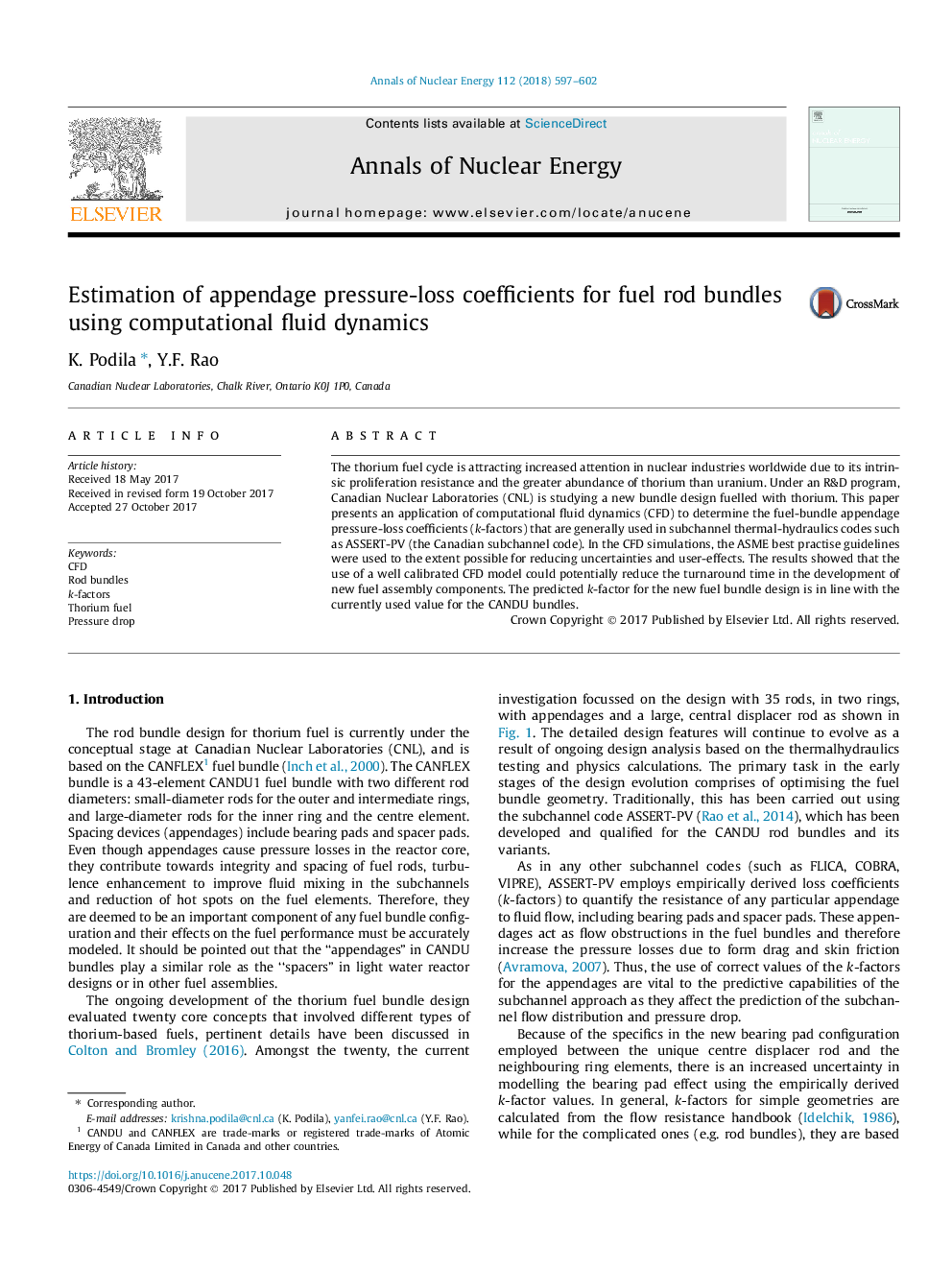| Article ID | Journal | Published Year | Pages | File Type |
|---|---|---|---|---|
| 8067274 | Annals of Nuclear Energy | 2018 | 6 Pages |
Abstract
The thorium fuel cycle is attracting increased attention in nuclear industries worldwide due to its intrinsic proliferation resistance and the greater abundance of thorium than uranium. Under an R&D program, Canadian Nuclear Laboratories (CNL) is studying a new bundle design fuelled with thorium. This paper presents an application of computational fluid dynamics (CFD) to determine the fuel-bundle appendage pressure-loss coefficients (k-factors) that are generally used in subchannel thermal-hydraulics codes such as ASSERT-PV (the Canadian subchannel code). In the CFD simulations, the ASME best practise guidelines were used to the extent possible for reducing uncertainties and user-effects. The results showed that the use of a well calibrated CFD model could potentially reduce the turnaround time in the development of new fuel assembly components. The predicted k-factor for the new fuel bundle design is in line with the currently used value for the CANDU bundles.
Related Topics
Physical Sciences and Engineering
Energy
Energy Engineering and Power Technology
Authors
K. Podila, Y.F. Rao,
